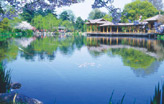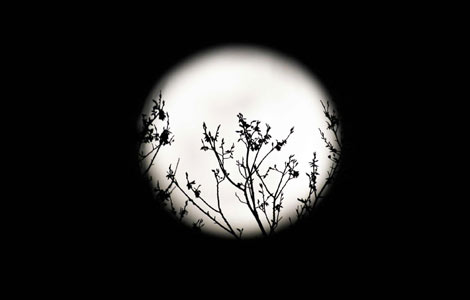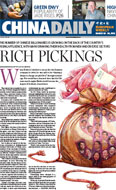Art
Carving elegance
Updated: 2011-03-15 13:41
(Chinaculture.org)
All about bamboo – one of the four gentleman
China is home to more than 250 varieties of bamboo. Straight and elegant, bamboo is regarded as the emblem of moral integrity and known as one of the Four Gentlemen together with plum, orchid and chrysanthemum.
Bamboo remains green all year round growing vigorously with a solid texture. As an auspicious Chinese saying goes, bamboo is considered as the symbol of prosperity, wealth and safety. It’s also one of the eternal themes of Chinese drawings.
Bamboo carving means to carve various ornamental patterns or characters on bamboo items, or make ornaments from bamboo roots by carving. China was the first country in the world to use bamboo articles.
The extant bamboo carving item from an early age is the painted lacquer bamboo ladle from the Western Han Dynasty (206BC-AD24) unearthed at the No 1 Han tomb of Changsha Mawangdui in Hunan Province. Decorated with dragon and braid designs using bas-relief and fretwork techniques, it is a highly finished rarity.
Bamboo works involve carvings on the following topics: poems, proverbs, square pictures, Chinese knotting, color drawings, foreign languages, hollow-out, surface carving, brush pots and golden lacquer paintings and so on. Materials used in bamboo carvings are carefully selected and treated with boiling water before drying in the air under direct sunshine. The process of bamboo carving has 27 steps, such as utensil making, sketching, carving and peeling. The resulted works are vivid and ingenious in unique and creative forms.
Two Representative Schools of Bamboo Carving
Very few bamboo carvings pre-date the Ming Dynasty (1368-1644), but mid-Ming-Dynasty bamboo carvings have become a professional industrial art, and more and more artists have taken it up, shifting its role from practical use into an art form. Jiading and Jinling areas that teemed with bamboo were the two bamboo-carving centers during the Ming and Qing (1644-1911) dynasties.
The Jiading School was represented by Zhu He, Zhu Ying and Zhu Zhuizheng, who were three generations of the same family. They were all good at painting, embossment and round carving, among which the embossment consists of bass and high embossments. With the efforts of the Zhu family, the Jiading School became the biggest branch of bamboo carving in the world of that period. Carvers like Hou Xiaozeng, Shen Dasheng, Wang Yongfang, Wang Zhiyu, Wangzhi, Wu Zhifan, Shi Tianzhang, Zhoupo and Gu Zhangyu were all outstanding members of this school.
The Jinling School featured another style, which paid no attention to the exquisite carvings, and pursued natural tastes with a minimal cut and polish. Its main technique was the bamboo concave carving, which not only involved lines but also the side inlays of the bamboo and could vividly recreate the sentiment embodied in the landscape. The Jinling School was set up in the mid-Ming Dynasty by Pu Zongqian, and it was unfortunate that his craftsmanship was not handed down after his death.
Techniques of Bamboo Carving
The techniques of bamboo carving mainly include keeping a green-covering, pasting yellow chips, round carving and inlaying.
E-paper

City of Joy
Welcome to the 'world of smiles' where life meanders slowly.
Debate on nuclear power revived
The future is now
Common approach
Specials

Beloved polar bear died
Berlin's beloved polar bear Knut, an international star died Saturday.

Panic buying of salt
Worried Chinese shoppers stripped stores of salt on radiation fears.

'Super moon'
The "Super Moon" arrives at its closest point to the Earth in 2011.





